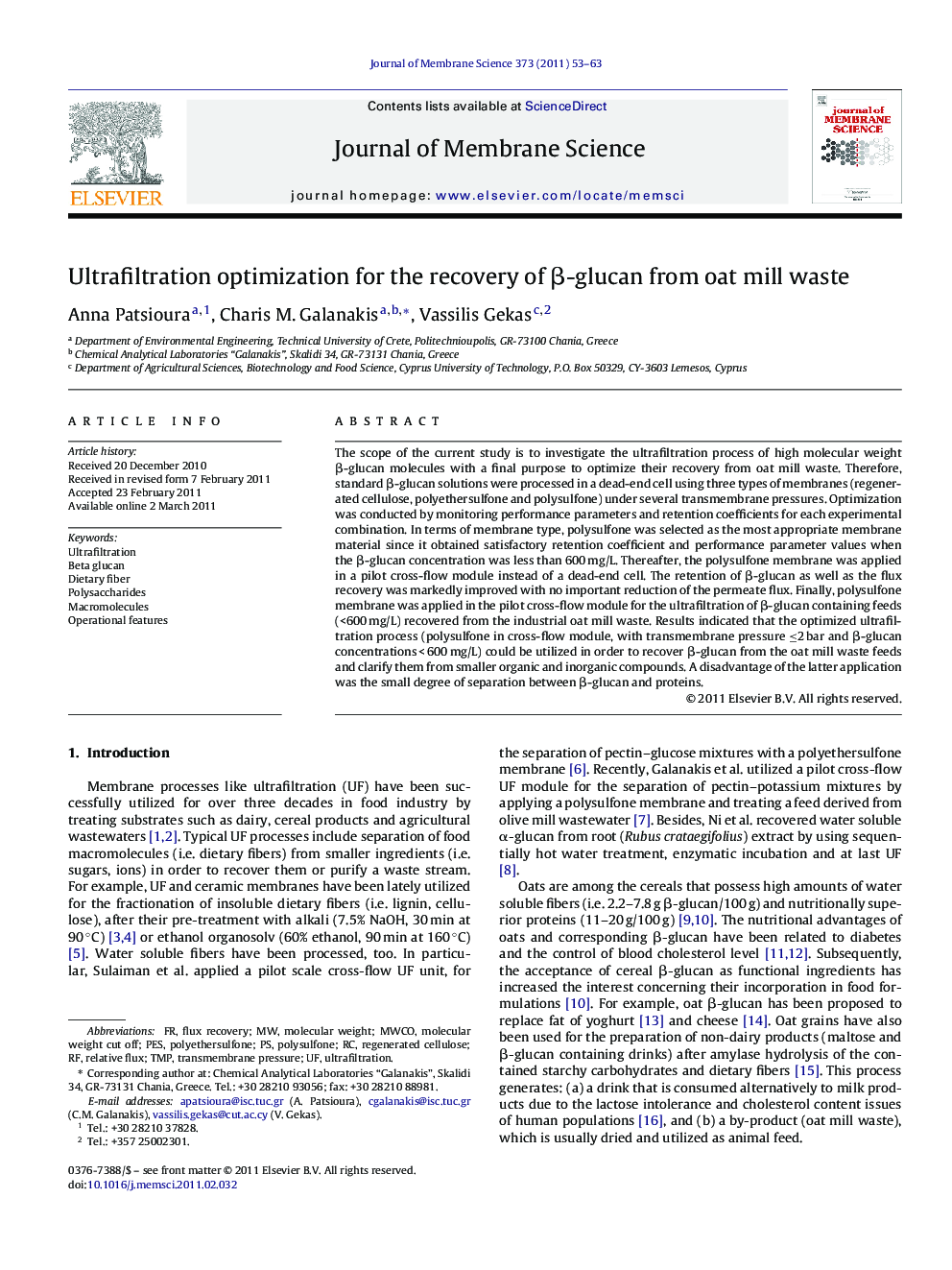| Article ID | Journal | Published Year | Pages | File Type |
|---|---|---|---|---|
| 635685 | Journal of Membrane Science | 2011 | 11 Pages |
The scope of the current study is to investigate the ultrafiltration process of high molecular weight β-glucan molecules with a final purpose to optimize their recovery from oat mill waste. Therefore, standard β-glucan solutions were processed in a dead-end cell using three types of membranes (regenerated cellulose, polyethersulfone and polysulfone) under several transmembrane pressures. Optimization was conducted by monitoring performance parameters and retention coefficients for each experimental combination. In terms of membrane type, polysulfone was selected as the most appropriate membrane material since it obtained satisfactory retention coefficient and performance parameter values when the β-glucan concentration was less than 600 mg/L. Thereafter, the polysulfone membrane was applied in a pilot cross-flow module instead of a dead-end cell. The retention of β-glucan as well as the flux recovery was markedly improved with no important reduction of the permeate flux. Finally, polysulfone membrane was applied in the pilot cross-flow module for the ultrafiltration of β-glucan containing feeds (<600 mg/L) recovered from the industrial oat mill waste. Results indicated that the optimized ultrafiltration process (polysulfone in cross-flow module, with transmembrane pressure ≤2 bar and β-glucan concentrations < 600 mg/L) could be utilized in order to recover β-glucan from the oat mill waste feeds and clarify them from smaller organic and inorganic compounds. A disadvantage of the latter application was the small degree of separation between β-glucan and proteins.
► Ultrafiltration optimized for the recovery of β-glucan (>100 kDa) from oat mill waste. ► Polysulfone showed higher flux recovery than regenerated cellulose and polyethersulfone. ► Cross-flow unit instead of dead-end cell improved performance regarding fouling effect. ► Ultrafiltration performance was optimum by loading β-glucan concentrations <600 mg/L. ► Membrane disruption was avoided by maintaining transmembrane pressure ≤ 2 bar.
